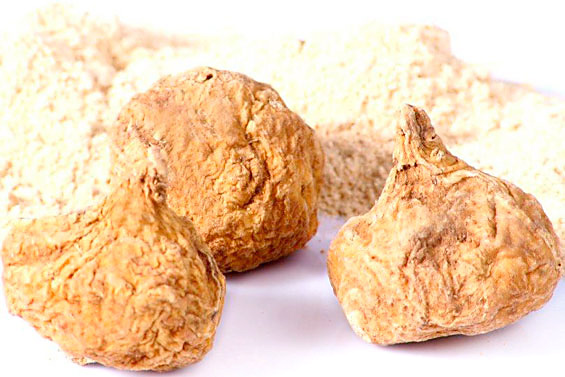
|
Product: Maca powder organic
|
|
| Basic Information: It is a herbaceous plant, native to our Andes, that has multiple health benefits, due to its high nutritional and medicinal value. In 2018, foreign sales of maca and its derivatives recorded a volume of 2,913 tons valued at 12.9 million dollars. The main export market for maca and its derivatives during 2018 was the United States. | |
|
Origin: -
|
Region: Junin, Pasco, Huánuco, Ayachucho, Huancavelina
|
|
Seasonality:
Jan
Feb
Mar
Apr
May
Jun
Jul
Aug
Sep
Oct
Nov
Dec
|
|
|
Certifications: USDA Organic, JAS, RTPO Peru, Kosher
|
Available presentations: Flakes, Powder, Gelatinized Powder, Sterilized.
|
|
Suggested industrial applications: Food industry: prepared products, baking, pastry, cereals, desserts, dairy products, ice cream, fitness nutrition, dietary supplements, healthy snacks, beverages.
|
|
|
Uses: IPrimary or secondary food input.
|
|
| Properties: This natural product has restorative attributes (returns the body to its normal health conditions); fortifying (provides vigor); energizing and homeostatic (restores the balance of the body). Its nutritional profile is similar to that of cereals, with 60% carbohydrates, 10% protein, 8.5% fiber and 2.2% fat. In addition, its roots have qualities that increase fertility and virility. Consuming it in powder form is an excellent source of amino acids, because it has seven of the eight essential amino acids that serve to transport and optimize the nutrients that the body needs, that is, water, carbohydrates, proteins, minerals and vitamins. Regarding lipids, its content is around 2.2%, including linolenic acid, palmitic acid and oleic acid; organic molecules that contribute to reducing cholesterol and cardiovascular diseases. On the other hand, it is a source of bioavailable minerals such as calcium, magnesium, phosphorus, potassium, sulfur, sodium, copper, iron, zinc, selenium, iodine, bismuth manganese, silicon and tin, ideal for bone formation or production of hormones. In addition, it contains group B vitamins such as B1 and B2, which provide energy; vitamin C that helps prevent cancer, maintain optimal cholesterol levels, prevent wrinkles, and keep the heart healthy; and finally vitamin E that helps protect the skin. |
|
|
Main functionality: Maca consumption is associated with a low body mass index and low blood pressure, because it contains high amounts of potassium, an important nutrient for reducing the risk of hypertension. Through plant sterols, maca is thought to stimulate the endocrine system and help maintain hormonal balance, in a way that is not yet well understood. A study has shown that maca reduces depression and anxiety. Additionally, a self-perception survey showed that it acted as an energizer. Maca is traditionally used to restore mental and physical balance, provide vitality and improve endurance in athletes.
|
|
| Secondary functionality: - | |
Nutritional Table:
| Components / Components | Per 100g / Per 100g |
| Calories / Calories | - |
| Moisture | 15.3 % |
| Carbohydrates / Carbohydrates | 59 g |
| Proteins / Proteins | 10.2 g |
| Total fat / Total fat | 2.2 g |
| Fiber / Fiber | 8.5 g |
| Ash / Ash | 4.8 g |
| Calcium / Calcium | 220 mg |
| Magnesium | - |
| Phosphorus / Phosphorus | - |
| Potassium | - |
| Iron / Iron | 15.5 mg |
| Thiamine / Thiamine | - |
| Riboflavin / Riboflavin | - |
| Niacin / Niacin | - |
| Ascorbic acid / Ascorbic acid | - |